

IELTS General Listening Practice Test – 36 (with Answers)
IELTS General Listening Practice Test With Answers: This is the 36 th test of our LISTENING Tests . All tests are based on real exam patterns and correspond to the actual difficulty level you may find in the IELTS.
The IELTS test is important in the sense that passing it will open pathways to legal and straightforward permanent residency in Canada.
This test is divided into four sections – 1, 2, 3 and 4.
Section 1 is a conversation between a man who works at Tourist Information Office and a woman who wants to know about tours.
Section 2 is a guide talking to a group of people visiting Willford Living Museum.
Section 3 is a discussion between two commerce students on the importance of Marketing Research in business.
Section 4 is a Biology student talking about water and how much people need to drink each day.
You can check your answers & calculate your band scores at the end of this test. It is strongly advised to print the sample answer sheet and mark your answers on the sheet as well.

Take notes in your IELTS General Listening question booklet as you listen. You can circle possible options and choose the most appropriate answer later when you transfer your answers to the answer sheet.
Questions 1-10
Complete the table below.
Write ONE WORD ONLY AND/OR A NUMBER for each answer.
KINGSTON TOURS
Questions 11-15
Choose the correct letter – A, B or C.
WILLFORD LIVING MUSEUM
11) In the early 1800’s most land in Willford was …
A. occupied by houses
B. used for farming
C. covered in trees
12) What happened in 1830 in Willford?
A. Ships started to be built nearby.
B. The first trains arrived in the town.
C. Valuable substances were found underground.
13) By the 1870’s Willford was most famous for making …
A. various metal objects.
B. all types of clothing.
C. plates and cups.
14) What does the guide say about visitors to the museum these days?
A. 900 visitors enter on a typical day.
B. 7,600 visitors arrive every week.
C. 300,000 visitors come each year.
15) The museum is also sometimes used …
A. as a location for filming.
B. for business conferences.
C. by people getting married.
Questions 16-20
Label the map below.
Write the correct letter, A-H , next to questions 16-20.
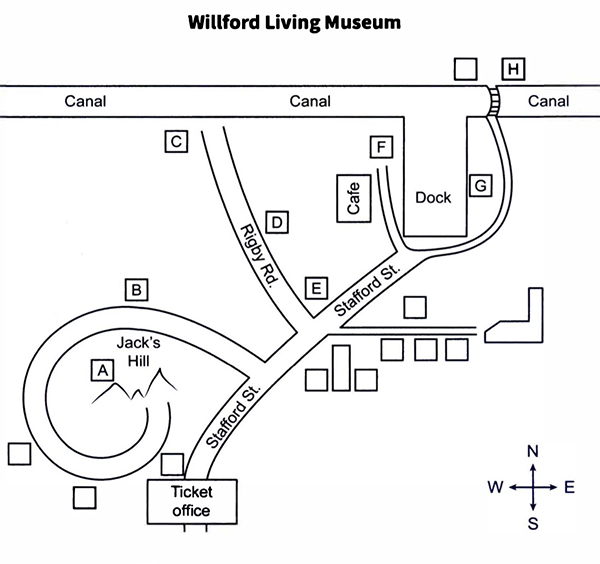
Questions 21-22
Choose TWO letters, A-E.
According to the students, what are the TWO most important benefits of market research?
Questions 23-24
Which do the students agree are TWO valid criticisms of market research?
Questions 25-26
The students are surprised by the success of which TWO sources of information?
Questions 27-30
Complete the flow-chart below.
Choose FOUR answers from the box and write the correct letter, A-F, next to questions 27-30.
MARKETING RESEARCH USING A BUSINESS’s OWN RESOURCES
Begin with staff education to maximise the chances of success.

Give staff examples of (27) ……………………. that will be helpful every day.
The BQR Group says that staff should make use of (28) ……………………. each week.
Having (29) ……………………. is motivating for staff, according to Business Guide.
Provide detailed feedback about any changes that you decide to make.
Allow staff to have (30) ……………………. to ensure continued participation.
Questions 31-37
Complete the notes below.
Write ONE WORD ONLY for each answer.
Questions 38-40
Complete the summary below.
Drinking too much water is not a common problem. Australian research has shown that people have difficulty (38) ……………………. when they have drunk enough. But occasionally people have become sick from too much water, particularly groups of (39) ……………………. This may be because they have high levels of (40) ……………………. in their blood. The best advice is to drink when you are thirsty.
IELTS Listening General Test Answer Key
- B/D (in any order)
- D/E (in any order)
- A/C (in any order)
- ELDERLY/OLD
- MEALS/FOOD/EATING
- TEMPERATURE
- SKIN/COMPLEXION
- SALT/SODIUM
About IELTS General Listening Practice Test – 36
IELTS Listening General Practice Test – 36 (with Answers) belongs to the ‘Easy-to-Moderate’ category. So, if you are scoring 34+/40 in this practice test you are highly likely to hit band 7 and above in the real exam setting.
ENJOYING OUR SAMPLE TESTS? HERS’S ONE MORE FREE BRITISH COUNCIL IELTS LISTENING PRACTICE TEST FOR YOU TO TRY.
All the best!!!
- IELTS General Listening Practice Test – 35 (with PDF)
- IELTS Listening General Practice Test 2023 (with Answers)
Rajit is the co-founder and an active blogger at 'CIC Talks'. He is best known for his rich expertise in IELTS & Canadian Immigration. Feel free to connect with him on Instagram & Twitter .
You May Also Like
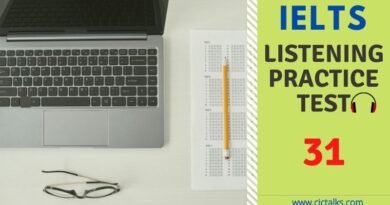
IELTS Listening Computer-Based Academic Practice Test – 31
Maple syrup: ielts listening with answers.
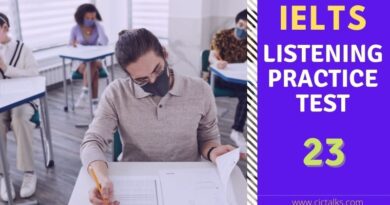
IELTS Academic Listening Test – 23
Leave a reply cancel reply.
Your email address will not be published. Required fields are marked *
Save my name, email, and website in this browser for the next time I comment.

Home / IELTS Listening Practice Tests / IELTS Listening Practice Test 1
IELTS Listening Practice Test 1
The old, print-friendly test
IELTS Listening Section 1
Car tours in the usa.
Example Name: Andrea Brown
Address: 24 1 Road Postcode: BH5 2OP Phone: (mobile) 077 8664 3091 Heard about company from: 2
Possible self-drive tours Trip One: • Los Angeles: customer wants to visit some 3 parks with her children • Yosemite Park: customer wants to stay in a lodge, not a 4 Trip Two: • Customer wants to see the 5 on the way to Cambria • At Santa Monica: not interested in shopping • At San Diego, wants to spend time on the 6
Questions 7–10 Complete the table below. Write ONE WORD AND/OR A NUMBER for each answer.

Describe a time when you tried to do something that were not very successful Cue Card

Describe a live sports match that you have watched cue card
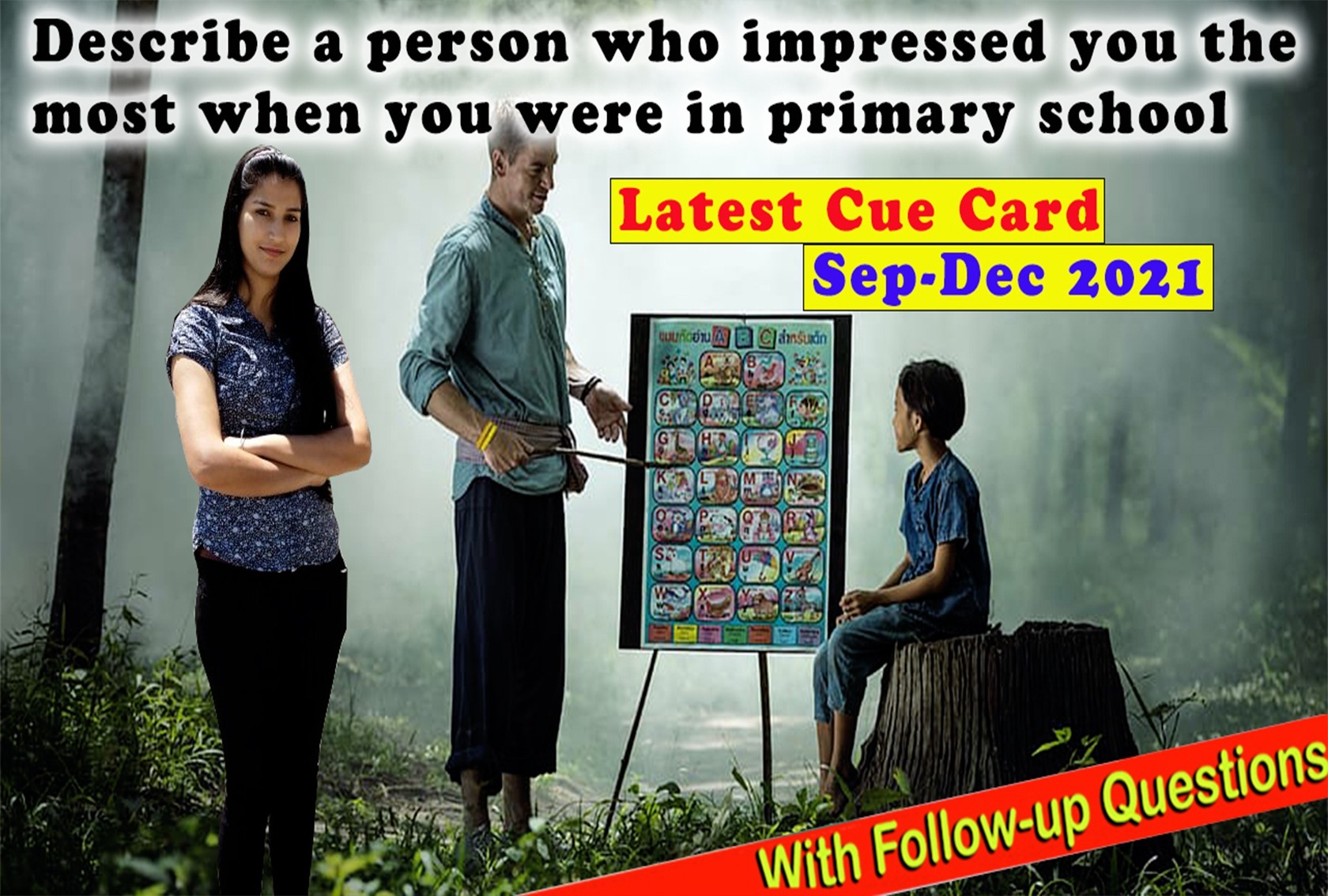
Describe a person who impressed you the most when you were in primary school Cue Card
Ielts listening practice test 27 with answers, actual exam listening.

IELTS Listening Practice Test 16 With Answers
You will hear a tourist talking to a London Tour Company in order to organise a tour of the popular sights of London.
Questions 1 – 5
For each Answer write NO MORE THAN ONE WORD AND / OR A NUMBER.
Questions 6-8
Choose TWO letters A-G .
6-8. Which three places does the tourist decide he’s likely to see?
A. Buckingham Palace
D. Houses of Parliament
E. Hyde Park
F. St Paul’s Cathedral
G. London Eye
Questions 9-10
IELTS Academic Listening Practice Test 27 With Answers
Choose the correct letter A, B or C .
9. How will the tourist buy the tickets?
A. By phone
C. On the bus
10. How long before he leaves should he buy his tickets?
C. 3 months
You will hear Dan Saunders, a wildlife expert, giving a talk about Pandas.
Questions 11-12
11. Each day, pandas need to eat:
A. Very little nutrition
B. 12-38 kg of bamboo
C. 330 pounds of bamboo
12. If pandas are cared for away from the wild, they can live for approximately:
A. 6 months
B. 14-20 years
C. 30 years
Questions 13-14
Choose TWO letters A-E .
Select two things that are endangering pandas:
A. Public awareness
B. Ecotourism
C. Poaching
D. Other wildlife
E. Building of roads and railroads
Questions 15-16
Write NO MORE THAN THREE WORDS AND / OR A NUMBER .
15. What proportion of the panda population in China is protected by reserves?
16. What did the WWF create which encouraged people to support pandas?
Questions 17 – 20
Write NO MORE THAN TWO WORDS for each answer.
You will hear a university tutor talking to two students about problems they are having with a business studies project.
Questions 21 – 22
Academic Listening Practice Test 5
21 What is the problem that the students are having with the project?
A. The readings are too difficult
B. The readings are not interesting
C. The project is taking too long
22 When can extensions be granted?
A. Problems with planning
B. Illness or accidents
C. Scheduling issues
Questions 23-27
What main problem do the students suggest each company has. Match the company to the problem. The first has been done for you.
Choose your answers from the box and write the letters A–G next to questions 23–27.
23. Princeton Windows
24. MK Cars
25. Lakeside Golf
26. Bryson’s Meats
27. Mojo’s Music Shop
Questions 28-30
Which opinion does each person express about Mojo’s Music?
Choose your answers from the box and write the letters A-F next to questions 28-30.
28. Sarah
30. Neil
Questions 31-40
Academic Listening Practice Test 27
Complete the notes below
Write NO MORE THAN TWO WORDS AND/OR A NUMBER for each answer.
Latest Articles
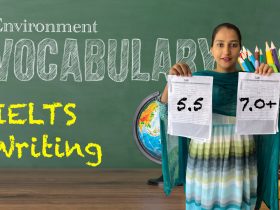
IELTS writing vocabulary for 9 band
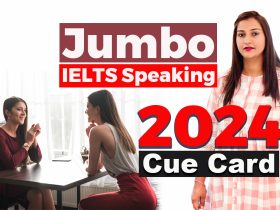
IELTS Speaking 2024 jumbo cue card
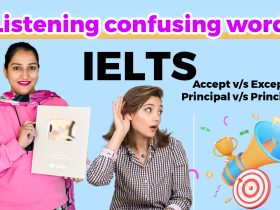
IELTS Listening confusing word 2024
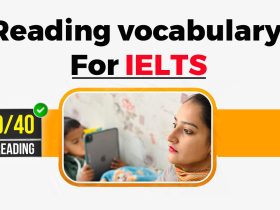
IELTS Reading Mastery: Enhancing Skills Through Synonym Exploration
Ielts listening practice test 30 with answers, ielts listening practice test 29 with answers, ielts listening practice test 28 with answers.
Free IELTS lessons signup

- Academic practice
- General practice
- Task 1 Academic
- Task 1 General
- Task 2 (essay)
IELTS Listening Practice Tests
Here you can find full IELTS Listening Tests and answers to them. All tests are constantly being renewed and correspond to the real exam sections.
- Choose one of the tests below and click on the first section of it.
- Play the audio and answer the questions.
- After you finish the section, press "check" and you will see the correct and wrong answers, and get your result.
- Then you can go on to the next section and do the same.
- After you finish the fourth section, press "Get result!".
Learn more about IELTS Listening test
IELTS Listening test 5 (40 questions)

IELTS Listening test 6 (40 questions)
IELTS Listening test 7 (40 questions)
IELTS Listening test 8 (40 questions)
IELTS Listening test 9 (40 questions)
IELTS Listening test 10 (40 questions)
IELTS Listening test 11 (40 questions)
IELTS Listening test 12 (40 questions)
IELTS Listening test 13 (40 questions)
IELTS Listening test 14 (40 questions)

IELTS Mock Test 2021 July
- Published on: 21 Jul 2021
- Tests taken: 488,505
Answer Keys:
Part 1: Question 1 - 10
- 1 4628 3095
- 2 local refreshments
- 4 reserve a seat
- 5 Sydney Opera House
- 6 Blue Mountains
- 7 thirty/30
- 8 10th February
- 9 Great Barrier Reef
Part 2: Question 11 - 20
- 14 MasterCard
- 15 2.5%/2.5 percent
- 16 internet service
- 17 (some) charge
- 18 requirement
- 19 fifteen hundred pounds/1,500 pounds/1,500 GBP
- 20 9:00 a.m.-3:30 p.m./9am-3:30pm/9am to 3:30pm
Part 3: Question 21 - 30
- 26 Global Economy
- 27 Victoria Smith
- 28 London Press
- 29 William Hanna
- 30 Business Management
Part 4: Question 31 - 40
- 32 modify a terminal
- 33 concealed camera
- 34 raw parts
- 35 tamper resistance
- 37 travelling
- 39 24%/24 percent
- 40 old technology
Review your test now?
Leaderboard:
Share your score
Tips for improving your ielts score

How to solve the reading question: "Table completion"
Task description You will be provided with an incomplete table which summaries or paraphrases information given in the reading text. The...
10 Aug 2018
Scan below QR code to share with your friends
Review & Explanations:
Questions 1-4
Complete the notes below.
Write NO MORE THAN THREE WORDS AND/OR A NUMBER for each answer.
SUMMER TOUR RESERVATION
Questions 5-10.
Complete the table below
Questions 11-13
Choose the correct letter, A, B or C .
The main reason for opening bank account is _________________________
- A to pay bill easily.
- B to keep money safe.
- C to pay tuition fee.
The occupation of the client at present is ________________________
- A professor.
The recommended bank account by clerk is ________________
- A Current Account.
- B Deposit Account.
- C Savings Account.
Questions 14-19
Complete the table below.
Question 20
Answer the question below.
Write NO MORE THAN TWO WORDS OR A NUMBER for the answer.
What time do the most banks open on Saturdays?
Questions 21-23
Choose the correct letter, A, B or C.
How many parts does a paper include?
- A Three parts
- B Four parts
- C Five parts
How many words does a paper need?
- A 1,000-3,000
- B 3,000-4,000
- C 3,000-5,000
What’s the tutor’s point about the Internet resources?
Questions 24-25
Choose TWO letters, A-E .
What does the tutor warn the student about the paper ?
- A paper deadline
- B research data
- C plagiarism
- D library resources
- E research method
Questions 26-30
Write NO MORE THAN THREE WORDS for each answer.
Questions 31-34
Questions 35-40.
Write NO MORE THAN TWO WORDS AND/OR A NUMBER for each answer.
The terminals have a function of 35 to credit fraud
Professionals in the U.K. use 36 to monitor the cash machines.
A magnetic strip on the credit card is designed for 37 customers.
Most banks arrange a 38 between convenience and security.
The fraud rate has fallen by 39
Evidence indicates fraud has always related to 40
-------------------------------------------
Great thanks to volunteer Thương Nguyễn Phan Hoài has contributed these explanations.
(M=Man; W=Woman)
M: Good afternoon. The Australia Travel agency, how can I help you? W: Good afternoon. I’d like to know some information about trips to different resorts. M: OK. Can you tell me some of your details first? W: Of course. M: What’s your occupation? W: I’m a first year student. M: Are you an Australian? W: No. I’m from New York. M: So you are American ? W: Yes. M: What’s your full name? W: My name is Ariel Lee. M: Tell me your contact number please? W: It is 46283095 . And my address? M: No. We just need your contact number. W: OK. Can you introduce me some attractions? M: Obviously it varies, but always places of famous main resorts, such as Sydney, Melbourne or some places like that. W: Just tour resorts? I mean does that include other activities? M: Yes. Besides main resorts we will arrange for you to enjoy some local refreshments and some special activities. W: So, how much does it cost? M: Usually, it varies between $20 dollars and $35 dollars per head, depending on the place. W: And what is the departure date and time? M: It depends on various tours. But try to keep the departure time fixed. W: When? M: 7 o’clock in the morning. W: And how about the transport? M: We have a minibus or coach depending on the number of tourists. W: May I need a reservation? M: Yes. You know summer holidays are coming. So I suggest that tourists reserve a seat in advance . W: Is there a discount for that? M: I’m sorry. We do not have any discounts during peak season. W: Could you tell me some details of the trips? M: Yes, the first place is Sydney. That’s on the 12th of January. We’ll have twenty-five people in a minibus. W: Fine. Going to which attraction? M: We will visit one of the most famous theatres in the world. W: The Sydney Opera House? M: Right. You can appreciate to watch an opera there. W: Really? What’s the name of the opera? M: I’m not sure. Let me check the House’s arrangements. And then you can visit the National Museum to know about the history and customs of Australia. W: Great. M: In the evening you can enjoy some local snacks if you like. W: Fine. M: We’re going to the Blue Mountains on the 25th of January. W: Blue Mountains? Is it a blue mountain? M: The mountain got its name for blue fog. It is usually covered by a blue fog. W: That’s so interesting. M: Yes. It is a popular place for young men because they are so cool and you can enjoy lots of sports there, such as rock climbing, bush-walking, and bird watching. W: How many people will go there together? M: You will take a coach that has about 30 seats. W: Fine. M: And the next place is Melbourne on the tenth of February with about twenty people in a minibus. W: What’s the resort? You could appreciate the famous Melbourne Church and maybe you might have a chance to attend a local exhibition if they hold it as usual. W: Fine. Do you have some tours to the beach? M: Yes. One of the most famous coral reefs in the world is the Great Barrier Reef and we arrange that on the 23rd of February . W: I’m looking forward to visiting there. M: Yes. Many people like there. There are some interesting water sports, such as diving and swimming in the water or just taking a photo of coral. W: Great. I guess there will be many people. M: Yes. But our coach is only for thirty people all together. W: That’s so great. Can you book a seat for me now? M: Yes. And I will confirm your reference number later by telephone, OK? W: Right. Thank you very much. M: You’re welcome. I hope you will enjoy the trip.
M: Good morning. I’d like to open a bank account, please. W: Good morning. What kind of account do you want to open? M: I’m not sure. Perhaps you can give me some suggestions. I only want to deposit money in the bank and pay all kinds of bills easily. W: Fine. I’ve got the application form here. First of all, can I have your full name please? M: Richard Lee. W: Fine, Richard, what’s your occupation? M: I’m studying a Doctor degree now although I was a dentist before coming here. W: Well, so you are a student. M: What kind of account can you suggest for me? W: How about a Deposit Account? M: What’s the difference between that and a current account? W: There are many differences such as the interest rate, overdraft and service and so on. M: Fine. I will take your recommendation. W: OK. Let’s talk about the main two account cards of the Deposit Account. M: Fine. W: One card is called the Solo Card and the other one is named Master Card . M: Which one is better for me? W: Let me introduce you to some differences of the two cards. M: OK. W: The first one is annual interest rate. M: Which one is higher? W: Of course. It is the Master Card. At present its rate is 5.5 percent, but the Solo Card is only 2.5 percent .
M: How about the other differences? W: The service supplied with the two cards. M: Could you speak specifically? W: We usually supply Internet service and mobile service with all of the cards, of course including the Solo Card . M: Yes. I’d like to ask for the service of mobile and oh, does Solo Card have an overdraft? W: I’m sorry. But Master Card has such a service. M: Fine. W: If you want to take more money out of the bank than you have in it – be very careful – you should not do this without the bank permission and you will have to pay some charge. M: Do you mean interest? W: No. I mean the overdraft charge. M: How much is that charge? W: According to the bank rules the minimum fee is about 2%. M: Fine. W: The last item of the two cards is the requirement. There is no limitation of the Solo Card, but if you want to get Master Card you should deposit a minimum sum of fifteen hundred pounds in the first time. M: Oh. What’s the requirement of money? W: What do you mean? M: I mean I cannot deposit cash when I open a bank account. W: Don’t worry! We accept cash and check or even money order. M: Great. W: So which card do you decide to open? M: I’d like to open the Master Card. W: A good choice. How often would you like to receive your statement? M: Monthly please. W: OK. The last one you should know is the opening time. Banks usually open from 9:00 a.m until 4:30 p.m from Monday to Friday, but most branches open until 3:30 p.m. on Saturdays. M: OK, I see. Thank you very much. W: You’re welcome.
(S=Student; T=Tutor)
S: Good morning. Oh, it just hit twelve. Good morning. Mrs. Potter, may I come in? T: Oh, Jerry, of course. Come in and take a seat please. S: Thank you. T: Well, how about your assignment? S: Do you mean my paper? T: Yes. S: I still think about the draft, but I hope you can give me some help and suggestions. T: Of course. How long will it take you to finish your draft? S: Er… I’m not sure, may be three days? T: My advice is that you should spend a lot of time on your draft. As you know a good beginning is very important for a paper. A good draft can help you outline your paper even benefit your argument. S: OK. I will try my best to write up my work. Mrs. Potter, how many parts in a paper? T: Generally speaking, there are four parts and references. S: So there are five parts? T: Right. Contents, introduction, main body … S: And conclusion? T: Yes, and the bibliography.
S: So how about the word limitation of my paper? T: According to the requirements you have to write at least three thousand words and not over five thousand. S: OK. Three to five thousand. T: Right. How about your research? S: I haven’t begun to do the research.
T: Why? S: Because I’m not sure about the research method. I mean I cannot decide to use which one now. T: I remember I suggested you to use the method of interview. S: Yes, but I think maybe questionnaire is better for my work. T: Really? Tell me your reason. S: I have to spend some time of the day on a part-time job, so I think maybe a questionnaire is a good way to collect the data that I need. T: Fine. Oh, do you search resources or data from the Internet? S: Yes. I think it is a good way to collect data and as you know it can help save lots of time. T: Jerry, in fact, many students do most of their research on the Internet. You might think that it is an easier way to get resources but most data are from highly unreliable resources. So be critical. S: OK, I will pay attention to that. T: Then, there are some things you should consider when you write the paper. S: OK. T: Be careful with your references and quotations and do not share other people’s work. I mean you should write clearly about reference book and do not forget to acknowledge the original writers. Otherwise, you will be failed for plagiarism. S: OK, I’ve got it. T: The other point is … S: Deadline? T: No. Deadline is the date of handing in your work. You’d better hand it in on time. But if you have a reasonable excuse you can ask for an extension. S: Fine. Sorry to interrupt you. T: That’s OK. The other point you should pay attention to is your research data. S: OK. I will write them clearly. Oh, Mrs. Potter could you recommend to me some good reference books about the topic of my paper? T: Fine. Let’s check the reference book list. The first one is Drake Wister’s book. S: Right. What’s the title? T: Global Economy. S: Is it the one published by The Cambridge University Press? T: Right. And I think Victoria Smith’s book is a good choice. S: What’s that title? T: The Strategy of Marketing. S: And which publisher? T: London Press. S: Fine. And How about others? T: The book called The Economics Tendency is a good one for your paper. S: Really? And the writer and the publisher? T: The writer is Hilary Justice and the publisher is Oxford University Press. S: Can I borrow it from the library? T: Of course. S: Great. T: And the last one that is helpful to your work is the book of William Hanna. S: How do you spell the surname? T: H-A-N-N-A. S: OK. And the title of his book? T: Business management published by Cambridge University Press. S: OK. T: But you cannot borrow the book from library. S: Why? T: Because it belongs to the closed reserve you have to read it in the library. S: OK. Thank you very much. T: You’re welcome.
(H=Host; F=Farrow)
H: Hello. In today’s programme we have invited Ken Farrow – Head of Financial Crime at Lioyds TSB to introduce some information about credit card fraud. Welcome Farrow. F: Thanks Catherine. H: Has a Chip and PIN given new chances for thieves to steal the details of our credit cards ? F: Maybe. In the past there has been typically 50,000 or 60,000 ATMs in the U.K when people’s PIN could be collected and now there’s hundreds of thousands of points of sale terminals. It’s a fraud where criminals capture details and then make a magnetic stripe card copy. H: How easy is it to do this? F: One way is to modify a terminal so that’s what’s been happening often in the past with cash machines – the same can be done for Chip and PIN terminals. The other way is to replace it with an entire counterfeit. There’ ve been incidences in America and in Europe with entire fake ATMs being set up. The last way is to set up a concealed camera ; and have somebody using sleight of hand to swipe your card through another machine so that you don’t even need to modify the main machine. H: If someone decided to set up a little device to modify one of these hand-held PIN pads, how easy would that be to do? F: Usually it wouldn’t be technically too hard, you just need about a hundred pounds to prepare for some equipment and raw parts , but it would take some engineering time and effort. The terminals themselves have a function of tamper resistance. If you try to open the casing, the machines will shut down and make them inoperative, but there’s only so much they can do against a persistent attacker compared with an ATM. Well once a card is copied and the PIN is obtained, crooks can make a fake card and use the PIN to withdraw money. H: Do all cash machines accept these cards in the U.K? F: Cash machines in the U.K may not accept these cards but many machines abroad will. H: Why? F: It depends on our radar. We can obviously know what they are doing while criminals can’t break the Chip at the moment. Also what they are doing is to use the old method to skim the magnetic strips on the cards. However, they’ve realised that they cannot succeed in the U.K, so they go on to the continent and to other countries in the Far East and use them where ATMs are not secured for Chip use. H: Right, so they can take the old style card and use it abroad and get the cash out more easily? F: That’s right. There is a magnetic strip attached to the card for customers who are travelling. H: So what are you doing about this increase of use in foreign cash machines of card that have been stolen here? F: What we’re doing is to gradually extend our security blanket. That means we will monitor the card usage whether it’s in the U.K or abroad. If we feel there’s something wrong we will contact and confirm with the customer. We’re up against organized crime and organized crime is trying to get one step ahead of us and we’re trying to keep one step ahead of them. H: Yes. How does security work in U.K. machines? Because sometimes fake card will work there as well, won’t they? F: When a bank is looking at its arrangements, it has to balance up convenience to customers with security. H: Yes. So what are you doing to make things more secure? F: I think the Chip and PIN situation has really improved and if you look at the figures in fact hard fraud has dropped by 24% over the last period. I think you can say this programme has done well. H: Yes. I can see the figures but there has been a huge amount of coverage in the press this week. Some banks have stopped using PINs – doesn’t that decrease the public trust in this new system? And some people even think the new system is designed for new fraud. F: I don’t think so. I’m not going to comment on particular cases. What I would say is that usually the evidence of crime has always been with the old technology not with the new. H: So new technology seems to be working well. F: That’s right. H: OK, thanks for your professional introduction. See you next time. F: See you.
Great thanks to volunteer Ha My Hanh has contributed these explanations and question markings.
If you want to make a better world like this, please contact [email protected]
Thank you for contacting us!
We have received your message.
We will get back within 48 hours.
You have subscribed successfully.
Thank you for your feedback, we will investigate and resolve the issue within 48 hours.
Your answers has been saved successfully.

Add Credits
You do not have enough iot credits.
Your account does not have enough IOT Credits to complete the order. Please purchase IOT Credits to continue.

- Preparing for IELTS
- Practice tests
- Free online IELTS Listening practice tests
IELTS practice Listening test - part 1
This is the first part of your Listening test. Listen to the audio and answer questions 1-10.
Listen to the instructions for each part carefully. Answer all the questions. You can download the questions for the entire Listening practice test from the Listening practice test 1 page. The questions for part 1 are also shown on this page.
While you are listening, write your answers on the question paper. Use a pencil.
When you have completed all four parts of the Listening test you will have ten minutes to copy your answers on to a separate answer sheet.
Listen to the audio for part 1
To listen now, left click on the link (the audio player will open in a new tab). To listen later, download the audio by right clicking and selecting 'Save Link As'.
Questions 1–5
Complete the notes below. Write no more than two words and/or a number for each answer.
Questions 6–10
Complete the table below. Write no more than one word and/or a number for each answer.
You have completed the first part of your Listening test. Now move on to Listening part 2.
Continue to part 2
- Full IELTS Practice Tests
- Practice Tests
Self-drive tours in the USA
- View Solution
Solution for: Self-drive tours in the USA
Answer table.
Found a mistake? Let us know!
Share this Practice Test
Exam Review

Good morning. World Tours. My name is Jamie. How can I help you?
Good morning. I want some information on self-drive tours in the USA. Could you send me a brochure?
Of course. Could I have your name please?
Andrea Brown.
Thank you. And your address?
24. Ardleigh Road.
Can you spell that?
A-R-D-L-E-l-G-H Road.
Thanks. And can I have your phone number?
Is a mobile alright?
It's 07786643091.
Thank you. And can I ask you where you heard about World Tours? From a friend? Or did you see an advert somewhere?
No. I read about you in the newspaper .
OK, I'll get the brochures in the post to you but can I give you some information over the phone. What kinds of things do you want to do on your holiday?
I’m interested in going to California with my family. I’ve got two children and we want to hire a car.
OK. We have a couple of self-drive tours there visiting different places of interest in California. The first one begins in Los Angeles and there's plenty of time to visit some of the theme parks there.
That’s something on my children’s list so I'd want to include that.
Good. Then you drive to San Francisco. From San Francisco you can drive to Yosemite Park where you spend a couple of nights. You can choose to stay in a lodge or on the campsite.
I don't like the idea of staying in a tent . It'd be too hot.
Right. And the tour ends in Las Vegas.
The other trip we can arrange is slightly different. It starts in San Francisco. Then you drive south to Cambria.
Someone told me there’s a really nice castle near Cambria. Will we go near that?
Hearst Castle is on that road so you could stop there.
Good. I'd like to do that. Does this trip also go into the desert?
No, it continues to Santa Monica where most people like to stop and do some shopping.
We have enough of that at home so that doesn’t interest us.
Well you could go straight on to San Diego.
That's good for beaches isn’t it?
That’s right, that's a good place to relax and your children might like to visit the zoo before flying home.
I don’t think so. We want some time for sunbathing and swimming.
So how many days are the trips and how much do they cost?
The first one I told you about is a self-drive tour through California which lasts twelve days and covers 2.020 kilometres. The shortest journey is 206 km and the longest is 632 kilometres. The cost is £525 per person.
That includes accommodation, car rental and a flight but no meals.
And the other trip?
That lasts nine days but you spend only three days on the road. You cover about 980 kilometres altogether.
So is that cheaper then?
Yes, it's almost a hundred pounds cheaper. It’s £ 429 per person, which is a good deal.
So that covers accommodation and car hire. What about flights?
They aren’t included. But these hotels offer dinner in the price.
Well, thank you very much. I'll be in touch when I’ve had a chance to look at the brochure.
I’m pleased to help. Goodbye.
Questions 1-6
Complete the notes below.
Write ONE WORD for each answer.
SELF-DRIVE TOURS IN THE USA
Name: ... Andrea Brown ......
Address : 24 1 Road Answer: Ardleigh Locate Listen from here
Postcode : BH5 20P
Phone : (mobile) 077 8664 3091
Heard about company from: 2 Answer: newspaper Locate Listen from here
Possible self-drive tours
• Los Angeles: customer wants to visit some 3 parks with her children Answer: theme Locate Listen from here
• Yosemite Park: customer wants to stay in a lodge, not a 4 Answer: tent Locate Listen from here
• Customer wants to see the 5 on the way to Cambria Answer: castle Locate Listen from here
• At Santa Monica: not interested in shopping
• At San Diego, wants to spend time on the 6 Answer: beach/beaches Locate Listen from here
Questions 7-10
Complete the table below.
Write ONE WORD AND/OR A NUMBER for each answer.
Other Tests
- 6 - Matching
- 4 - Sentence Completion
New city developments
- Economics & Business
- 0 unanswered
- 4 - Summary, form completion
- 6 - Sentence Completion
Computer virus
- 4 - Multiple Choice
- 6 - Plan, map, diagram labelling
Making a steam pit
- 5 - Matching
- 5 - Sentence Completion
Theatre Studies Course
- Leisure & Entertainment
- 3 - Plan, map, diagram labelling
Directions on a map
- Short Practice
- 3 - Sentence Completion
Identifying detail
Found a mistake let us know.
Please descibe the mistake as details as possible along with your expected correction, leave your email so we can contact with you when needed.
Describe what is wrong with the practice test:
Please enter description
Enter your name:
Enter your email address:
Please enter a valid email


Reading Actual Tests
Download PDF ielts reading test
Listening Recent Tests
Download PDF ielts listening test
english-practice.net
Practice English Exercises to Improve Your Skills
english-exercises.net
Practice More English Exercises to Improve Your Skills
englishpracticetest.net
Practice More English Tests to Improve Your Skills
Cambridge Practice Test
Practice Cam Listening Test with Answer & Transcript
Listening Practice Test
Practice Listening Test with Answer & Transcript
Practice Cambridge Reading Test with Answer
Practice Reading Test
Practice Reading Test with Answer
Practice Reading Mock Test with Answer
Speaking Practice Test
Speaking Practice Test with with Band 8-9 Samples
42 Common Topics for ielts Speaking Part 1
100 TOPICS for ielts Speaking Part 2 with Band 8 Sample
70 TOPICS for ielts Speaking Part 2 with Band 8+ Sample Recordings
Vocabulary Words
Most Common Vocabulary Topics for ielts Speaking
Writing Practice Test
Writing Practice Test with Band 8-9 Samples
Writing Mock Test with Band 8-9 Samples
Writing Task 2 Topics with Band 7-8-9 Samples
General Reading Tests
Practice General Reading Test with Answer
Audioscripts Listening Practice Test 34
audio script ielts listening
AGENT: Good morning. City House Services. How may I help you?
CUSTOMER: Good morning. I’d like to arrange to have my house cleaned.
AGENT: Certainly. I just need to ask a few questions. First, could I take your name?
CUSTOMER: Yes, it’s Barbara Hill . (Example)
AGENT: Thank you. Next, is your house in London?
CUSTOMER: Yes, it’s in Kingston in Southwest London. (Q1)
AGENT: OK, Southwest London and… er, what’s the postcode?
CUSTOMER: SW105.
AGENT: And what is the square footage and what rooms will we be cleaning?
CUSTOMER: The whole house is 268 square feet, and there is no need to clean all the rooms. I only want to have my bedrooms cleaned.
AGENT: OK, how many bedrooms does the house have?
CUSTOMER: Three bedrooms. Oh no, sorry, we used to have three bedrooms, but we only have two bedrooms now.
AGENT: Are those single bedrooms or doubles?
CUSTOMER: Doubles . (Q2)
AGENT: Fine, two doubles…
CUSTOMER: There is one more room which needs cleaning. It was used as a bedroom before, and now we have converted it into an office . (Q3)
AGENT: I understand. Three rooms have got to be cleaned, and are all of those rooms upstairs?
CUSTOMER: Yes. Then, downstairs we have a kitchen-diner, conservatory, and lounge (Q4) . The kitchen-diner is quite large and has the usual equipment – cooker with oven, refrigerator, cupboards, and worktops. The conservatory has a lot of plants, but there’s no need to take care of them. The lounge has a leather three-piece suite and a large coffee table.
AGENT. Thank you. And do you keep any pets?
CUSTOMER: Yeah, I really love keeping them. I’ve got two dogs and three cats.
AGENT: OK, then if our staff come over to offer the service, please take your pets away. Have you looked at our services packages?
CUSTOMER: Yes, I have one in front of me.
AGENT: Excellent.
AGENT: Any extra services you need (Q5) – switching bed linen, working in the garden, cleaning the glass in the conservatory, that kind of thing?
CUSTOMER: Err… no… err… actually, replacing the bed linen (Q5) …yes… that would be good.
AGENT: No problem. I’ll just make a note of that. How about curtains, mats, and carpets? What would you like us to do with those items?
CUSTOMER: The curtains… I’ll have to think about that. I think we should have the carpets cleaned really well every quarter (Q6) . Mats can just be done with the laundry.
AGENT: Of course. How about clothes? We can have our staff wash and iron them, or we can have them taken to a dry cleaner’s.
CUSTOMER: Washing and ironing. No, just ironing (Q7) . That’ll be OK..
AGENT: OK, fine. I know quite a bit about what you want now. I should let you know that we locate on 12 Amyes (Q8) Road, that’s A-M-Y-E-S.
CUSTOMER: Em.
AGENT: And we work from Monday to Sunday except Tuesday and Wednesday. Could you let me know when is convenient for you?
CUSTOMER: Next Friday… err… no, that’s no good. My son invites his friends over in the afternoon that day. Perhaps next Thursday or next Saturday. Let me check, OK, next Thursday . (Q9)
AGENT: When is it convenient for us to come over and provide the service? Is it OK if we come in the morning? Or we may come in the afternoon? It depends on your schedule. I’m OK with any time. Just give me a call to let me know you’re coming before you arrive.
AGENT: Sure, we will.
CUSTOMER: By the way, how long would it take for the service?
AGENT: We usually work 1-3 hours for house cleaning, and the work will take three hours at most. And of course, if it takes more than three hours (Q10) , you should pay extra for it.
CUSTOMER: Er… fine.
AGENT: So, let me just do some calculations…
Hi everyone, and welcome to Sydney Airport. Today, I’ll be giving you the inside information on the day-to-day operations of the Australian Quarantine Service here. We hope to provide you with a better understanding of why such heavy security regulations are necessary by educating you (Q11) on how we operate and why we do the things we do.
We’re not here to try to persuade you to fly through Sydney Airport, though we hope you’ll find your experience relatively stress-free and comfortable.
First things first, our personnel. Can anyone guess how many people work at Sydney Airport? We have 200 alone working in Terminal 2, so can you guess how many in the whole airport? I heard someone say 360, that’s getting closer… What? Did someone say 2,000? That’s way too high. Sydney Airport actually employs 440 people (Q12) . A lot, right? And about half of those employees work in security-related matters..
Moving on to our not-so-human employees, let’s come and see our favourite pooch, Milton. Milton is our best drug-sniffing dog on the force. He’s friendly to most people – you can even come pet him at the end of our tour. Burnouts beware, though, he’ll find everything.
Notice that even though there are so many of us around him, Milton stays quite calm. This is the precise reason he was chosen for the job . (Q13)
Dogs that are chosen are not predisposed to sniff out different narcotics – that’s something we teach them already.
So here’s a part of the airport most people never notice – the cargo transport terminal. This is where packages are shipped to and from.
Normally we ship around 4,400 packages per month. In this airport alone, over 52,000 packages were shipped in and out over the past year (Q14) . We ship to and from 170 different countries. Not bad, eh? Probably it will go up to over 72,000 packages this year. And despite over 100 flights in and out of here daily, the number of lost or delayed packages is impressively low. If you send your package through here, rest assured we’ll get it where it’s going.
Let’s move on to the area most of us are familiar with, the passenger terminals. In order to be allowed into this area, you must pass through security with your ticket and if you’re travelling internationally, your passport. If you’re travelling domestically, you just need a legal form of ID. If you don’t have those, you will not be allowed to pass through security and board your flight.
During the security scan, your carry-on items will be checked for dangerous items such as weapons, sharp objects, and liquids that exceed our specified limit. If you attempt to pass any of the prohibited items on this list posted at the entrance, Qyou are still allowed to board the plane, but you’ll be given a warning (Q15) and your item will be confiscated.
Don’t worry, we will not arrest you for having too much shampoo in your bag, or anything like that.
We also search your carry-ons and parcels for any perishable items.
We prohibit the transportation of local vegetation and prohibit parcels containing any insects in them. You may or may not have learned about this in Biology class, but when some plants are introduced to a new environment, they spread wildly and wipe out the current species around it. It is important to control the introduction of new plants into an ecosystem, so we must prohibit the transport of any fertile seeds . (Q16)
So what happens to parcels containing possibly suspicious items? It’s of course something we do not take lightly here. If an object passes through the scanner that appears suspicious in any way, it is separated out for manual search by a member of our trained security personnel. If an illegal plant or simple sharp object like a pocket knife is found, it is simply disposed of in our biohazard waste containers (Q17) , and the package itself is returned to the sender (or passenger, if it is for a passenger flight). More serious weapons are reported to higher authorities for investigation.
As far as parcel security, the material of the parcel is important. For shipped goods, the most common material used (and the most widely accepted) is paper (Q18) . Make sure it is packed sturdy enough, with no rips or tears. We’ve definitely had packages rip open before due to haphazard packing. A more common problem, though, is the package labels (Q19) . When an item does not make it to the right place, this is the most common reason. The label may not be in the right place or marked clearly enough.
If you’re receiving any items from abroad that must be declared, please remember our guidelines in order to ensure the timely delivery of your item. Make sure it is packed correctly, and we ask that you notify customs between 2 and 10 (Q20) days within the item’s scheduled arrival date.
Okay, before we move on, are there any questions?
MR. SMITH: Welcome! Please come in and gather over here around the tables. My name is Adam Smith, and I’m the librarian here. I’ll show you around today and explain how to use these facilities. Hopefully when I’m done with it, you’ll know the ropes, and please feel free to let me know of any questions or concerns that you may have. Now, we’re at the gate of the library. Upon entering into the door, you’ll find that the restrooms are on your left-hand side, and opposite them is a Photocopy Room. Many of you are wondering about the check-in and check-out process. What you have to do is go to the Circulation Desk, which is to the east of the Photocopy Room. The Reading Room is a really large area in the centre of the library, just to the north of the Circulation Desk (Q21) . I’m sure you won’t miss it. If you’re here to do research, this is where you should bring books to look through. However, if you’re here to do any group projects or other interactive activities, I advise you to use one of the study rooms, which are just to the east of the Reading Room. Moving on to the southeast corner, we have the Periodicals Section, just next to the study rooms (Q22) . We have a collection of different newspapers and magazines in this section. You can get last week’s weather reports, or all the top stories five years ago – our periodicals can be traced back 20 years to the time when our school library was built. Ah, our first question! Yes?
STUDENT: Can we check out magazines from the library?
MR. SMITH: I’m sorry, but you cannot take any periodicals out of the library. You’re welcome to read them for as long as you want while you’re here, but you cannot check them out.
STUDENT: I wonder if there is any place where we can get some food in the library. Do we have a store here?
MR. SMITH: Of course. The Food Service Centre is just metres away from the study rooms. It’s on the northeast corner as you look at the map (Q23) . The Food Service Centre offers different kinds of snacks though it’s not big. Well, moving on along to the west, you will Find the Video Resource Centre on your right hand (Q24) . We have educational videos and documentaries, as well as major motion pictures. We ask that you pay attention to the tag on the video that you pick up, as many of our documentaries are for on-site viewing only and may not be taken out of the library. To the west of the Video Resource Centre is our Satellite TV Station (Q25) . Here we stream the news from Channel 19 for most of the day.
STUDENT: How many channels does it have?
MR. SMITH: (laughs) It does have nearly 200 channels, but we generally will give top priority to channels with some big events, like presidential addresses or other breaking news. During the coverage of the presidential debate, students will take a break from studying and flock to watch it. Last but perhaps most important is the Enquiry Desk. It’s just on the left-hand side when you walk into the library (Q26) , so it’s impossible to miss it. If you have any questions about how to use equipment or where to find something, come and ask the assistant. Don’t be shy, because that’s what they’re here for!
MR. SMITH: Speaking of questions, one of the questions we get asked is how to actually check out a book once a student has picked one out. If it’s a fiction or non-fiction book, look for the pink and yellow (Q27) check-out card inside the back cover of the book. You can also find information about the book on these cards, including its publishing date, genre, ISBN, and a log of dates it’s been checked out before. Present this card to me or any library assistant, and we’ll stamp it and then the book can be kept for three weeks. You can find general information on a field of study by using one of our subject (Q28) guides. We have them on paper here, but any of our computers will allow you to search within fields as well.
STUDENT: What if the library doesn’t have a resource we’re looking for?
MR. SMITH: Great question, I’m going to address that. Our library is in a network with a number of other universities in the area, so if there is something you’re looking for and it’s available somewhere in the area, we’ll be able to get it for you. However, there are universities (Q29) which are not part of the network, so we do not share resources with them. If you want more information about the library and its resources, you’ll find it in a labelled blue folder (Q30) on my desk in the enquiry section. Okay, so that’s a lot of information all at once, and I don’t expect you to remember it all. The most important thing is, please be respectful of the staff and if you need help with anything at all, come and ask me or one of the assistants. Alright, any questions?
Good morning. Today, we will continue our study of Crocodylus niloticus by talking about its living habits. We’ve already discussed the evolutionary attributes that set it apart from its crocodile relatives. Does everyone remember that?
Yes, it has an extremely narrow snout, and three or four rows of protective scales on its back, as compared to two rows on other members of the Crocodylus genus.
Let’s take a look at how these carnivorous man-eaters live, where they live, and finally, whether they really deserve their vicious reputation.
To start, I’d like to address a great question posed to me by a student during yesterday’s office hours. We talked about the distribution of crocodiles in Africa and saw that they are highly concentrated in the South and West of the continent. This student noticed that on the map displaying the distribution of crocodiles across Africa, there were no crocodiles in the Northern Region, and found no mention in the literature of the existence of crocodiles in the North of Africa (Q31) . Why might there be no crocodiles in North Africa? Let’s save this question for later in the lecture.
To find out more about the social habits of the African crocodile, one researcher named Tara Shine of the University of Ulster in Northern Ireland conducted a survey of the wetlands in Mauritania and received reports of 46 crocodiles living in one group, or float as we say when referring to crocodiles, though the usual number is a little less than half of that . (Q32)
In general, crocodiles are more highly concentrated in wet, subtropical environments near bodies of water and rich vegetation (Q33) . While South American crocodiles thrive in cool rainforests, the African crocodile is more equipped for heat. Though they can survive at the hot temperatures found in some deserts, they are not equipped to handle dry climates and thus cannot survive in places like the Sahara Desert of North Africa. As cold-blooded animals, crocodiles’ core temperatures fluctuate from their average of 38 degrees Celsius as external conditions change, thus they need to avoid extreme temperatures. Others live an underwater life, keeping a body temperature close to that of the water. As their own unique method of regulating their body temperatures, some African crocodiles have made dens by digging holes in the ground to provide themselves with a cool, dark place to retreat from the hot African sun . (Q34)
Speaking of the hot African sun, let’s go back to the question asked at the beginning of the lecture. We know that there used to be crocodiles in Northern Africa, yet today there are none. What are some possible explanations for this?
Some students have suggested that the African crocodile has evolved from a desert creature into a wetland creature, thus causing them to migrate south for more appropriate condition. Others presume that the crocodile was hunted out of Northern Africa by a fiercer predator. While these are intelligent guesses, the real story is a little bit different.
The key to this migration is that the Sahara Desert did not always cover the North of Africa. About 8,000 years ago, the land was fertile wetlands perfect for breeding crocodiles. Over time, though, the area dried out and the wetland slowly turned to desert, leading the African crocodile to migrate south to the marshlands they call home today . (Q35)
Some crocodiles did, however, adapt to living in dry conditions. In Mauritania, some crocodiles have learned to survive in an area where they can go up to 8 (Q36) months with no water by spending the driest of times in what’s called a torpor, or short period of hibernation. To utilise every bit of rainfall, these desert crocodiles dig underground caves that collect runoff, thus staying cool and hydrated.
During the mating period in November and December, males attract females to their viciously protected territory through a number of behaviours that range from snapping their jaws all the way to sending infrasonic pulses through the water. Afterwards, the female digs a hole up to 60cm in depth (Q37) to store the eggs for an 80-day incubation period. The female protects these eggs during the period, and sometimes even helps crack the eggs with her snout at the end.
These teeth-gnashing carnivores are softer than we think. Although these vicious creatures have attacked humans on a few occasions, the residents are not afraid of (Q38) them. In fact, they show a great deal of reverence towards these wondrous creatures. Some say that crocodiles bring water to their habitat, so if they leave, they will bring the water with them. Obviously this is not true, but it demonstrates the admiration the inhabiting people have for crocodiles.
Generally, crocodiles do not predate on humans. They attack (Q39) when humans populate the crocodiles’ habitat, instilling fear and uneasiness in the crocs. Like any other species, crocodiles are known to attack when feeling fear.
There’s still a lot more to be discovered about the African crocodile.
Researchers want to know more about the population size, how many crocodiles inhabit Africa in all, how they form separate floats, etc.
There is still also much to learn about migration patterns (Q40) , and relations to other populations of crocodiles now found in other parts of the world.
Next time, we’ll examine a few specific case studies of crocodile populations in Southern Africa.
Listening Practice Test 34
1 Southwest
2 double(s)
19 package labels
20 2 to 10/two to ten
27 pink and yellow
29 universities
30 (labelled) blue folder
38 afraid of
40 migration patterns
Submit a Comment Cancel reply
Your email address will not be published. Required fields are marked *
Save my name, email, and website in this browser for the next time I comment.
Download ebooks
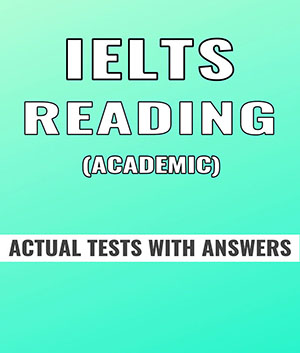
Welcome Guest!
- IELTS Listening
- IELTS Reading
- IELTS Writing
- IELTS Writing Task 1
- IELTS Writing Task 2
- IELTS Speaking
- IELTS Speaking Part 1
- IELTS Speaking Part 2
- IELTS Speaking Part 3
- IELTS Practice Tests
- IELTS Listening Practice Tests
- IELTS Reading Practice Tests
- IELTS Writing Practice Tests
- IELTS Speaking Practice Tests
- All Courses
- IELTS Online Classes
- OET Online Classes
- PTE Online Classes
- CELPIP Online Classes
- Free Live Classes
- Australia PR
- Germany Job Seeker Visa
- Austria Job Seeker Visa
- Sweden Job Seeker Visa
- Study Abroad
- Student Testimonials
- Our Trainers
- IELTS Webinar
- Immigration Webinar
IELTS Listening Practice Test 67 – with Answers
Updated On Feb 15, 2024

Share on Whatsapp
Share on Email
Share on Linkedin
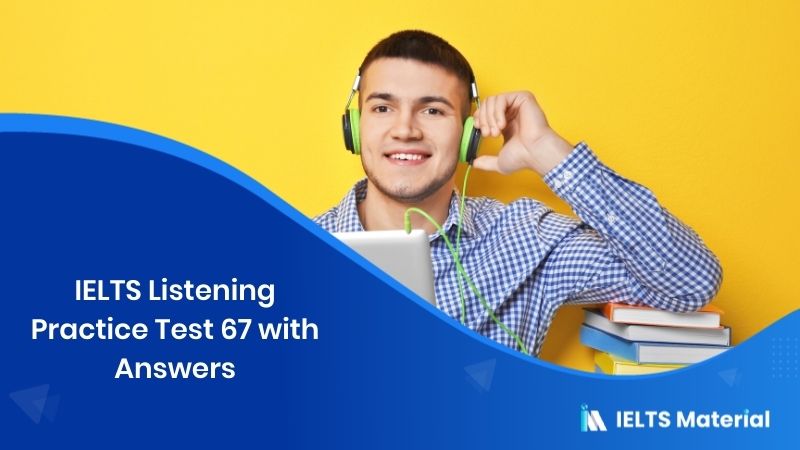
Limited-Time Offer : Access a FREE 10-Day IELTS Study Plan!
In the IELTS Listening Test, you will encounter a series of questions based on a short audio recording on a particular topic. To attempt the Listening test, you have to practice discerning the important information being relayed in the audio format and using it to answer the test questions. By practicing with sample questions, you can ensure a good score on this Module of the IELTS.
In the IELTS listening practice test , there are 40 questions of different types ranging from sentence completion, map labelling to multiple choice questions. It is important to attempt a test such as this to increase your exam preparedness.
In the Listening Test 67, you will hear 4 audio recordings and answer questions 1-40.
Section 1 is a woman booking a bicycle tour over the phone.
Section 2 is a tour guide giving a tour of a newly renovated health club.
Section 3 is a museum director talking to several student interns, explaining their internship duties at the museum.
Section 4 is a lecture ON the history of the tomato.
Audio Transcription
Download Audio Transcription
Question 1-10
Questions 1-4.
Complete the form below.
Write NO MORE THAN ONE WORD AND/OR A NUMBER for each answer.
Tour name: River Valley tour
Tour month: 1 ____________
Customer Name: 2 ___________ Schmidt
Address: P.O. Box 3 _____________ Manchester
Bicycle rental required?_____ Yes No
Dietary restrictions: 4 ____________
Questions 5-7
Choose the correct letters, A, B , or C . Write answers next to 5-7 on your answer sheet.
5 What size deposit does the caller have to pay?
A 5 percent
B 30 percent
C 50 percent
6 When does the deposit have to be paid?
A Two weeks from now
B Four weeks from now
C Six weeks from now
7 How will the luggage be carried?
B By bicycle
Questions 8-10
Choose THREE letters, A-F. Write answers next to 8-10 on your answer sheet.
Which THREE things should the caller take on the tour?
B spare tire
D water bottle
F guide book
[do_widget id=custom_html-36]
Questions 11-20
Questions 11-15.
Write the correct letter, A-F next to questions 11-15 .
What change has been made to each part of the health club?
HARTFORD HEALTH CLUB
A installed a new floor
B repainted
C moved to a new location
F replaced the equipment
Part of the health club
11 swimming pools_______
12 locker rooms_______
13 exercise room_______
14 tennis court_______
15 club store_______
Questions 16-18
Complete the sentences below.
Write NO MORE THAN TWO WORDS for each answer .
16 Tomorrow, _______________for adults and children will start.
17 On Wednesday, there will be a_____________.
18 A ______________is planned for next weekend.
Questions 19 and 20
Answer the questions below.
Choose the correct letter, A, B , or C . Write answers next to 19-20 on your answer sheet.
19 How many months did it take to complete the renovation work?
20 What project is planned for next year?
A An indoor pool
B An outdoor tennis court
C An outdoor pool
Also check :
- IELTS Listening Answer Sheet
- IELTS listening recent actual test
- IELTS Listening preparation tips
- IELTS Listening words
- How to Improve IELTS Listening Section 3 and 4?
- What is Signposting?
[do_widget id=custom_html-47]
Questions 21-30
Questions 21-25.
Choose FIVE letters, A—I. Write answers next to 21-25 on your answer sheet.
What FIVE things will the students do during their museum internship?
A art conservation
B administrative duties
C guide tours
D attend board meetings
E give classes
G write brochures
H plan a reception
I meet artists
Questions 26-30
Complete the notes below.
Write NO MORE THAN TWO WORDS AND/OR A NUMBER for each answer.
City Art Museum
The main part of museum was built in 26 ______________
The 27 _________ was built sixty years later.
Collections: modern art, works by 28 __________ , sculpture, European art.
Classes: 29 ___________ classes for adults
Arts and crafts workshops for children
Weekly 30 ____________ in the fall and winter
Questions 31-40
Questions 31-35.
Choose the correct letter A, B, or C . Write answer next to 31-35 on your answer sheet.
31 The tomato originally came from
32 The original color1 of the tomato was
33 The Aztec word for tomato means
A golden apple.
B plump thing.
C small fruit.
34 In the 1500s, people in Spain and Italy
A enjoyed eating tomatoes.
B used tomatoes as ornamental plants.
C made medicine from tomatoes.
35 In the 1600s, the British
A saw tomatoes as poisonous.
B published tomato recipes.
C ate tomato sauce daily.
Questions 36-40
Complete the timeline with information about the history of the tomato in the United States.
Write NO MORE THAN TWO WORDS for each answer.
1806: Tomatoes were mentioned as food in 36 ___________
1809: Thomas Jefferson 37 ____________ at his home in Virginia.
1820: A man proved that tomatoes were not poisonous by eating them 38 _____________
1830s: 39 ______________ appeared in newspapers and magazines.
1930s : People began to eat 40 __________________
Unlock Answer
Signup/Login and get access to the answers
Practice Test 66 << >> Practice Test 68
Practice IELTS Listening based on question types

Start Preparing for IELTS: Get Your 10-Day Study Plan Today!
Nafia Zuhana is an experienced content writer and IELTS Trainer. Currently, she is guiding students who are appearing for IELTS General and Academic exams through ieltsmaterial.com. With an 8.5 score herself, she trains and provides test takers with strategies, tips, and nuances on how to crack the IELTS Exam. She holds a degree in Master of Arts – Creative Writing, Oxford Brookes University, UK. She has worked with The Hindu for over a year as an English language trainer.
Explore other Listening Practice Tests
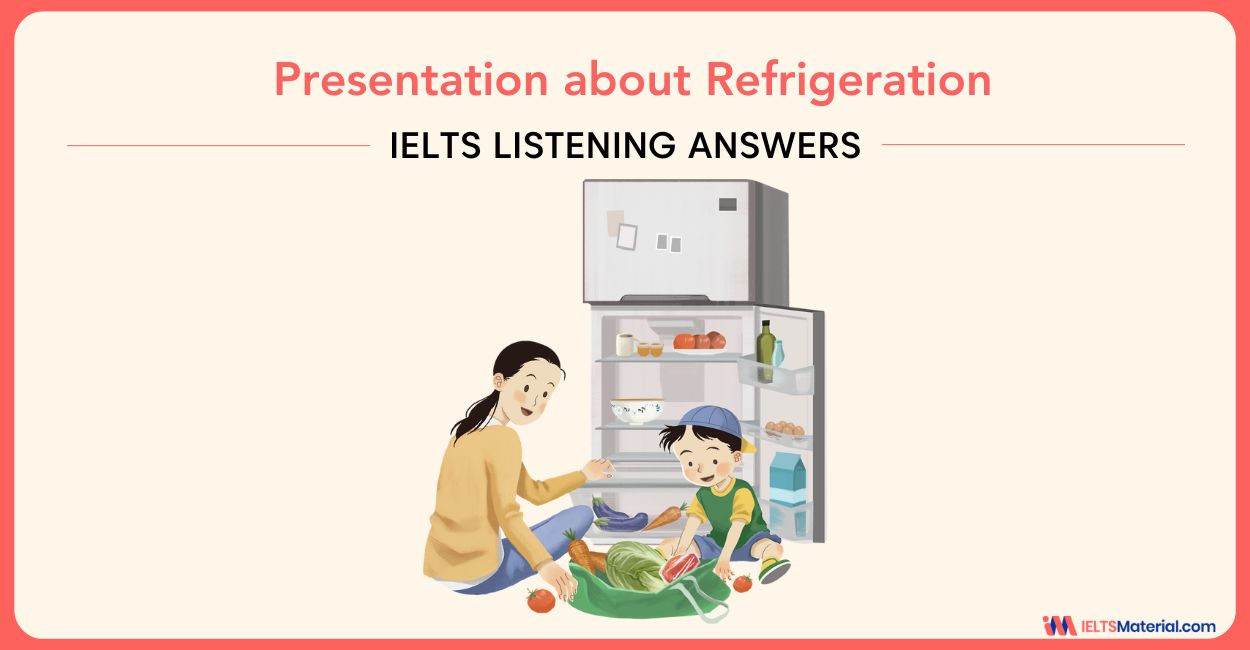
Kasturika Samanta
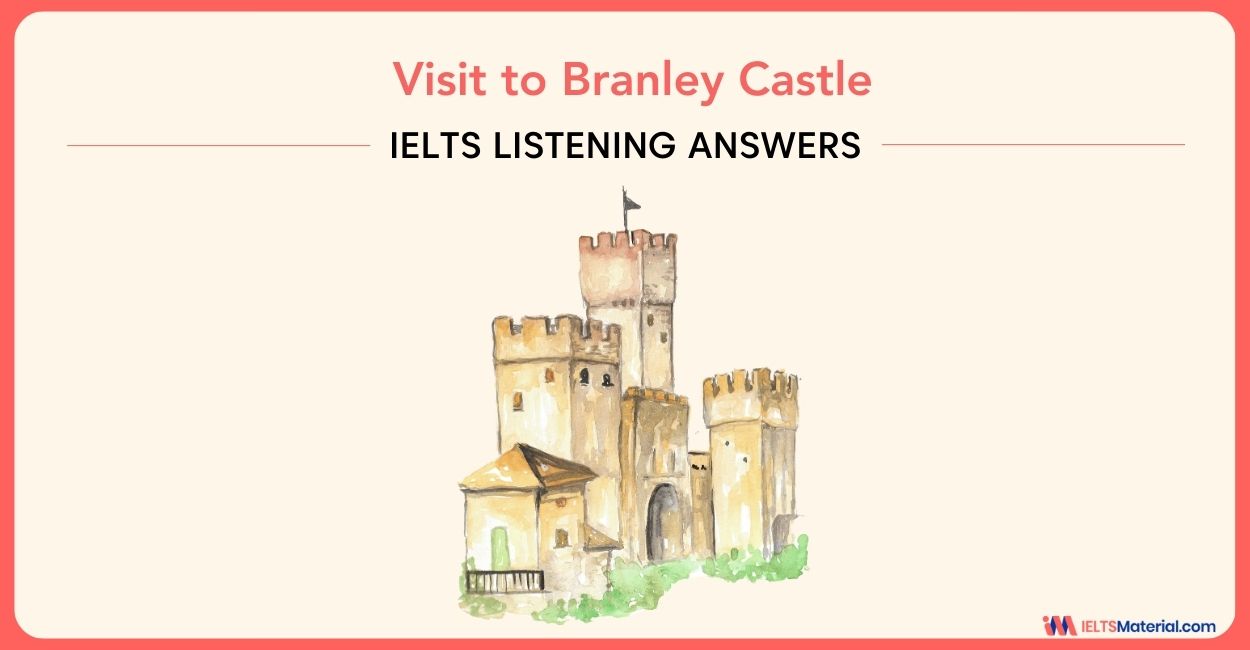
Courtney Miller

Post your Comments
Recent articles.
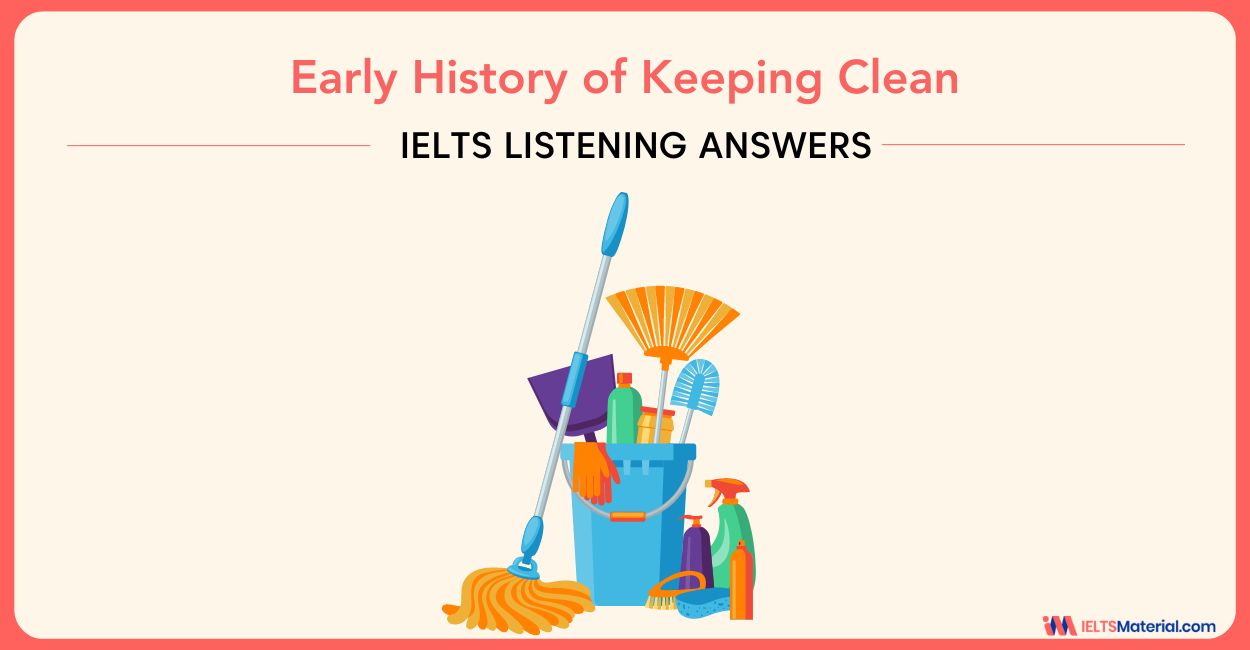
Nehasri Ravishenbagam
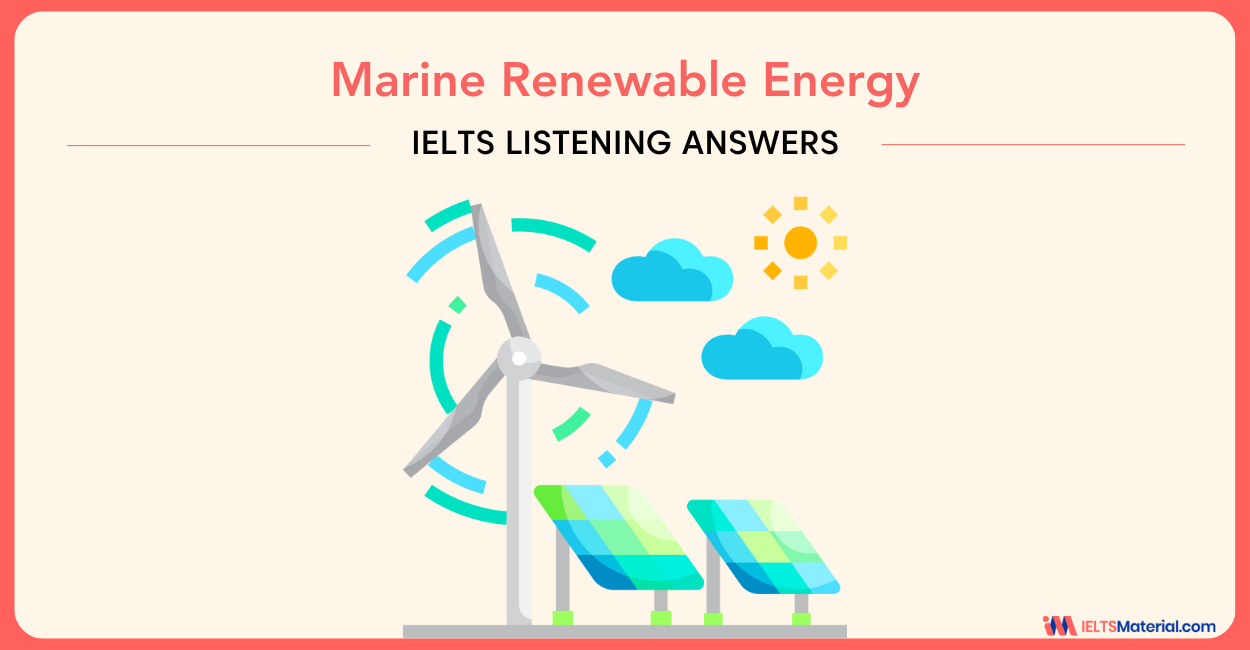
Raajdeep Saha
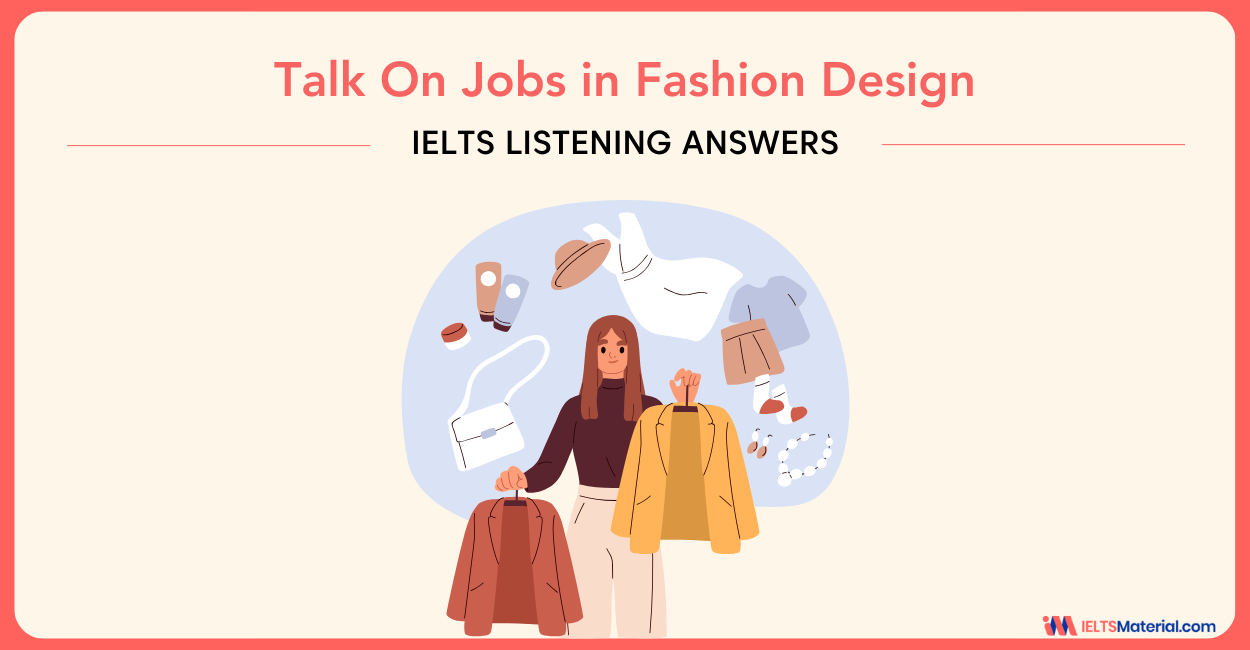
Our Offices
Gurgaon city scape, gurgaon bptp.
Step 1 of 3
Great going .
Get a free session from trainer
Have you taken test before?
Please select any option
Get free eBook to excel in test
Please enter Email ID
Get support from an Band 9 trainer
Please enter phone number
Already Registered?
Select a date
Please select a date
Select a time (IST Time Zone)
Please select a time
Mark Your Calendar: Free Session with Expert on
Which exam are you preparing?
Great Going!

IMAGES
VIDEO
COMMENTS
kindly Subscribe my free IELTS knowledge channel, comment for your problems you are facing in IELTS, you will get solution and Videos on that. Kindly note th...
IELTS General Listening Practice Test With Answers: This is the 36 th test of our LISTENING Tests. All tests are based on real exam patterns and correspond to the actual difficulty level you may find in the IELTS. The IELTS test is important in the sense that passing it will open pathways to legal and straightforward permanent residency in Canada.
MODIFIED LISTENING TEST WITH ANSWERS#ieltslistening #latestieltslistening #latestlisteningtest
English Speech Channel: https://youtube.com/@EnglishthroughSpeeches1Kingstown Tours from Cambridge IELTS TRAINER 2 LISTENING TEST 6You will hear each recordi...
SECTION 2 Questions 11 - 12. Choose TWO letters, A-E.. Which TWO things are included in the price of the tour?. A garden gloves. B ladybugs. C bush timbering lessons. D food. E hummina birds. Questions 13 and 14. Choose TWO letters, A-E.. Which TWO facilities of Pine Garden are open today?. A plant care centre. B cafe. C gift shop. D model town
Questions 11 - 15. Choose the correct letter, A, B, or C. 11 The company deals mostly with: A Big cities. B Nature holidays. C Nepal. 12 The overseas consultants deal mostly with: A Asia. B North America.
IELTS Listening practice test 9, part 1 - IELTS-up. IELTS Listening Sample 9. Section 1. This is the first section of IELTS Listening test #9. The Listening module consists of 9 sections and takes 40 minutes. Listen to the audio and answer the questions. As you finish, press 'check' and proceed to the next section.
The IELTS Listening test will take about 30 minutes, and you will have an extra 10 minutes to transfer your answers to the answer sheet. The four parts of this practice Listening test are presented over four separate web pages. Make sure you move swiftly from one page to the next so that your practice is as realistic as possible.
IELTS Listening test: practice IELTS Listening online. Sample 6, Section 1 of the listening test. Listen and answer the questions online. ... Tour type (1) Tourist attractions. The Harbour Bridge. The Opera House . The Queen Victoria (2) Timetable. From 7 am to (3) pm. Closest stop (4) metres out from here, at the front of the (5)
IELTS practice Listening test audio: part 4. First, listen to the audio. Left click on the link to listen now (the audio player will open in a new tab) or right click and select 'Save Link As' to download the file to your computer and listen later. Questions 31-33. Complete the summary below.
Questions 11-14. Choose the correct letter, A, B or C. 11 The reason why this island attracts so many tourists is that. A it's a good place to relax. B the transport is very convenient. C the ticket price is relatively low. 12 What is recommended to bring when you visit the island? A a raincoat. B a sun umbrella.
Car Tours in the USA. Complete the table below. Write ONE WORD AND/OR A NUMBER for each answer. IELTS Listening test — take this test online, print it or save in PDF. Car Tours in the USA Example Name: Andrea Brown Address: 24 1 Road Postcode: BH5 2OP Phone: (mobile) 077 8664 3091 Heard about company from: 2.
IELTS Listening Test Info. The IELTS Listening Test is divided into 4 sections. In each section, you will listen to one or more native English speakers then answer around 10 questions related to what you just heard. The entire IELTS listening section contains 40 questions in total.In general, the listening recordings start off easier and get harder as you progress through the exam.
About Press Copyright Contact us Creators Advertise Developers Terms Privacy Policy & Safety How YouTube works Test new features NFL Sunday Ticket Press Copyright ...
IELTS Academic Listening Practice Test 27 With Answers. Choose the correct letter A, B or C. 11. Each day, pandas need to eat: A. Very little nutrition. B. 12-38 kg of bamboo. C. 330 pounds of bamboo. 12. If pandas are cared for away from the wild, they can live for approximately:
To get your IELTS Listening score calculated, just follow this procedure: Choose one of the tests below and click on the first section of it. Play the audio and answer the questions. After you finish the section, press "check" and you will see the correct and wrong answers, and get your result. Then you can go on to the next section and do the ...
In the Listening Test 72, you will hear 4 audio recordings and answer questions 1-40 based on them. Section 1 is a monologue given by a guide to a group of tourists going on a coach tour of the capital cities of Europe. Section 2 is a conversation two students talking about a university assignment. Section 3 is a conversation between Mrs. Davis and a lady she is interviewing called Gina.
C note-taking. 23 The student has the ability of. A independence. B communication. C coping well with statistics. 24 The teacher believes that the industry of tourism is. A shrinking. B seeing a bright future. C growing popular.
The man's answer is "Sydney Opera House". Hence, the answer for Q5 is "Sydney Opera House". 6 Answer: Listen from here Locate Explain Report. From the question, we can assume that the answer must be noun. After talk about Sydney, the 2 people move on the conversation, the next place is "Blue Mountain" on 25th of January.
Prepare for your IELTS Listening test with part 1 of this free Listening practice test. Listen to the audio and answer questions 1 - 10.
Possible self-drive tours. Trip One: • Los Angeles: customer wants to visit some 3 parks with her children. Answer: theme Locate Listen from here. • Yosemite Park: customer wants to stay in a lodge, not a 4. Answer: tent Locate Listen from here. Trip Two: • Customer wants to see the 5 on the way to Cambria. Answer: castle Locate Listen ...
Afterwards, the female digs a hole up to 60cm in depth (Q37) to store the eggs for an 80-day incubation period. The female protects these eggs during the period, and some times even helps crack the eggs with her snout at the end. These teeth-gnashing carnivores are softer than we think.
In the Listening Test 67, you will hear 4 audio recordings and answer questions 1-40. Section 1 is a woman booking a bicycle tour over the phone.. Section 2 is a tour guide giving a tour of a newly renovated health club.. Section 3 is a museum director talking to several student interns, explaining their internship duties at the museum.. Section 4 is a lecture ON the history of the tomato.